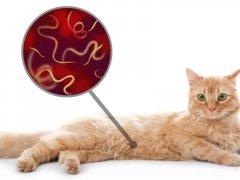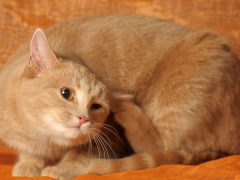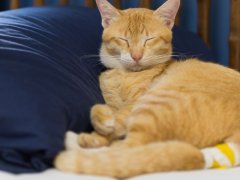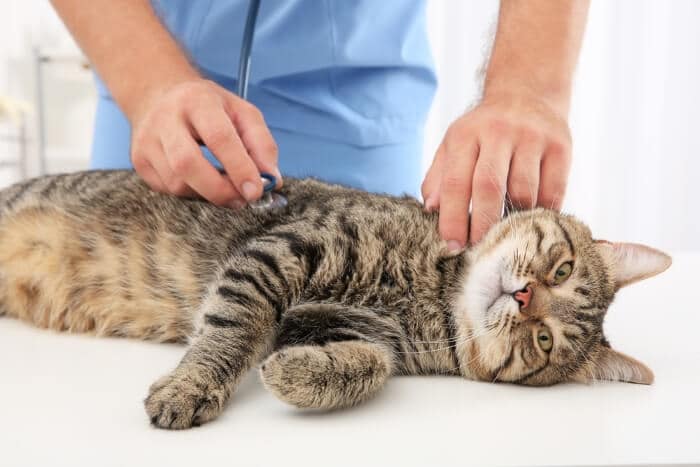
Hyperthyroidism is a very common condition in cats, especially over the age of ten years old.
What and Where Are the Thyroid Glands?
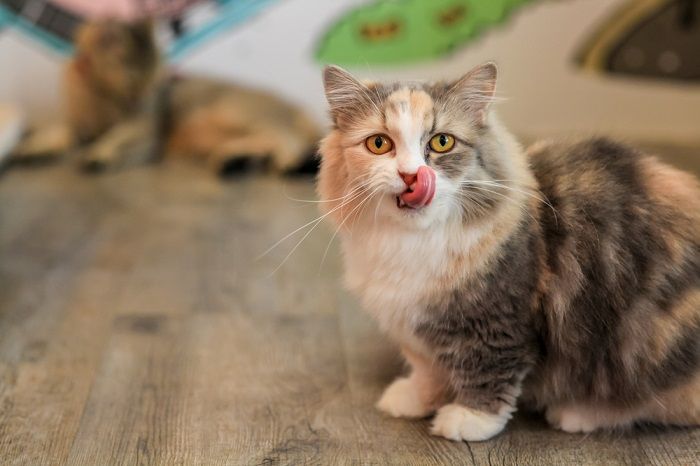
The thyroid glands are small structures, located halfway up the neck in cats, on either side of the windpipe, one on the left and one on the right.
They produce thyroid hormones, which act like the accelerator pedal in a car, giving animals energy and enthusiasm for life.
What Can Go Wrong With the Thyroid Glands?
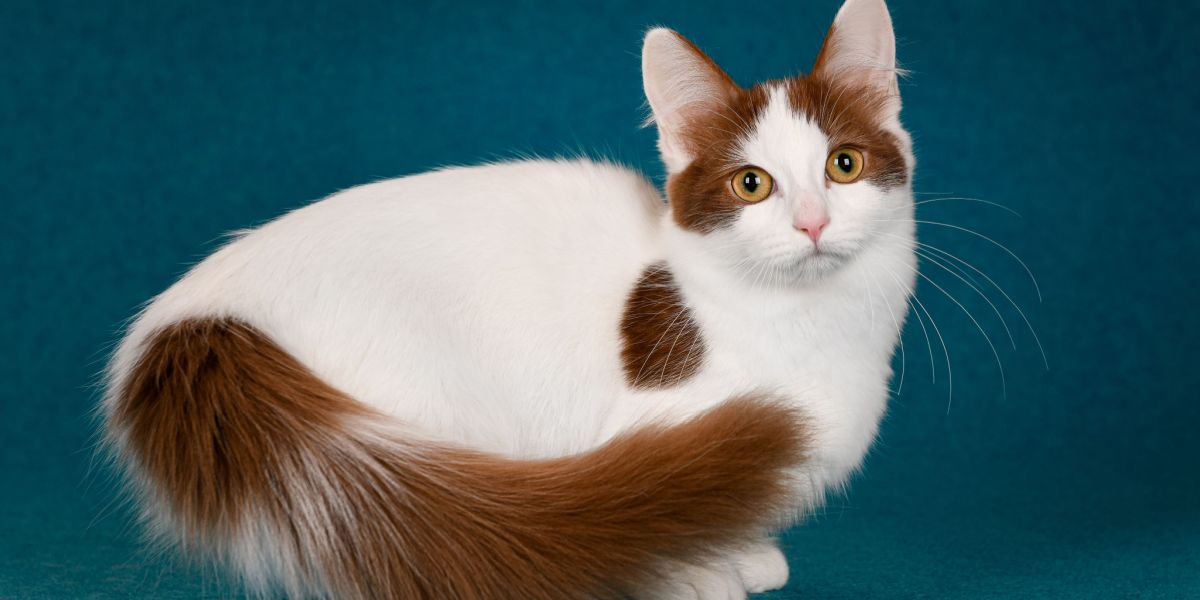
Too much thyroid hormone causes an animal to behave as if their accelerator pedal is permanently pushed down to the floor, while if there isn’t enough thyroid hormone, the animal becomes sleepy, lacking energy and becoming slow and lethargic.
Both of these abnormalities can occur in pets, with overproduction of hormone known as “hyperthyroidism”, and under-production called “hypothyroidism”.
There’s an interesting difference between dogs and cats: dogs tend to suffer from hypothyroidism while cats suffer from the opposite disease: hyperthyroidism, or an overactive thyroid gland.
What Is Hyperthyroidism in Cats?

Hyperthyroidism occurs when there is an elevated level of thyroid hormone produced by one or both of the thyroid glands in a cat.
It is an astonishingly common problem in cats: it’s seen more than any other cat hormone problem, and in one recent study of cats over the age of ten being blood sampled, 21% had elevated thyroid hormones. The average age at the time of diagnosis is 13 years.
What Causes Hyperthyroidism in Cats?
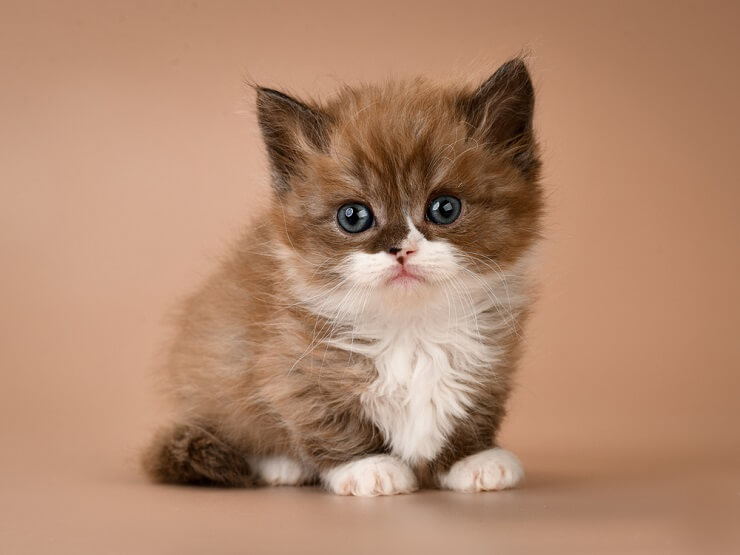
Nobody knows what causes hyperthyroidism, but the following factors have been noted as possible risk factors:
- Use of cat litter.
- Eating a diet consisting of more than 50% canned food.
- Eating a fish-based, canned food diet.
*Flea treatments have been ruled out as a contributing factor
The excessive thyroid hormone is produced by abnormal thyroid tissue: technically, it is described as “functional adenomatous thyroid hyperplasia” or “thyroid adenomas”.
In layman’s terms, this is often described as a “benign tumour”: it is not malignant or cancerous, and it will not spread to elsewhere in the body.
In around 70% of cases, both thyroid glands are affected, with 30% affecting just one gland only. Malignant cancer of the thyroid gland is rare in cats; it’s known as thyroid carcinoma and it causes only 1-2% of cases of hyperthyroidism.
What Are the Symptoms (Signs) of Hyperthyroidism in Cats?

Typically, the signs of hyperthyroidism develop gradually, over a few months. Often the cat carer notices a number of symptoms developing in their pet.
- Changes in the cat’s behavior and habits.
- A formerly placid, easy going cat might become more agitated and more irritable.
- The appetite is often affected, with changes in favorite foods, as well as a significantly increased appetite.
- Increased thirst.
- Increased urination, sometimes with accidents in the house.
- Increased vocalization, with cats howling and yowling more than before.
- Intermittent vomiting.
- The most telltale sign is weight loss despite an increased appetite.
If your cat shows a combination of some of the signs listed above, it’s important to take them to the vet promptly.
Diagnosis of hyperthyroidism is impossible without doing a blood test, and the sooner the diagnosis is made, the sooner treatment will be given, and the sooner your pet will be on the road to being fully healthy again. This is not a disease that will go away by itself, nor will it respond to home remedies of any kind.
The classic picture of a hyperthyroid cat that vets have in mind is an old, bright, thin cat who eats a lot, drinks more than usual and vomits occasionally.
That said, there are some cases that do not show fit this picture,and there are some cats that show these signs but have a normal thyroid gland. This is why it’s so important to have your cat checked by your vet if you are worried about their health in any way.
Can Young Cats Get Hyperthyroidism?

While hyperthyroidism is more common with advancing age, it can be seen in younger cats from time to time, with cases in the literature even describing rare cases of cats under one year of age with hyperthyroidism.
Is Hyperthyroidism Painful?

While hyperthyroidism does not cause pain in affected cats, there must be some level of discomfort associated with the signs of a racing heart, irritable nature, and increased hunger that is difficult to satisfy.
If hyperthyroidism is not treated, the signs of illness will get more and more severe, with affected cats eventually becoming emaciated and weakened. There is no need for this to happen: treatment is very effective.
There is no point in trying to help a cat with hyperthyroidism by feeding them more, even if they seem continually hungry. The extra thyroid hormones in their bloodstream will prevent this extra food from being used properly, and they will continue to lose weight regardless of how much you feed them.
What Do Vets Find When They Physically Examine a Cat With Hyperthyroidism?
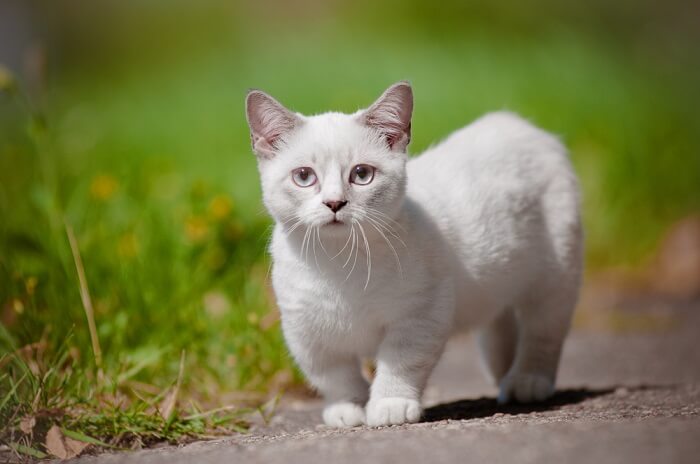
As well as noting that their patient is an older, bright, thin cat, there are three specific signs that vets look out for when examining a suspected case.
- The heart rate is usually raised: typically it might be over 200 per minute, which is much faster than the normal rate of around 150 to 160 beats per minute.
- When the vet listens to the heart, as well as the rapid rate, they may hear a heart murmur, an irregular heart beat, caused by the effect of excessive thyroid hormones on the heart and on the nervous system. In around 20% of cases, affected cats also have high blood pressure.
- The breathing rate may also be faster than normal, at over 30 per minute. The breathing rate is normally between 10 – 25 breaths per minute)
- A small hard bump can often be felt, on the underside of the neck, like a frozen pea beneath the skin, in the location of the thyroid gland. This is the enlarged thyroid gland, and it may be felt on one or both sides. When this is present, it virtually confirms the diagnosis, but it’s still important to follow this up with laboratory tests to be 100% sure.
What Laboratory Tests Are Used To Confirm Hyperthyroidism in Cats?

A blood sample is a key part of confirming the diagnosis of hyperthyroidism. Vets often start by carrying out a so-called “minimum database”, which means hematology (checking the red and white blood cells) and a biochemistry panel (measuring a range of enzymes and chemicals in the blood stream),
Many affected cats have characteristic blood cell changes, while 90% have elevations of liver enzymes, as well as other biochemical changes. Urine samples may also be recommended to assess kidney function in more detail.
To be definitive about the diagnosis, it’s necessary to measure the thyroid hormones directly: the serum T4 level is nearly always elevated, confirming that the cat is hyperthyroid. For complex reasons, around 10% of hyperthyroid cats have normal T4 levels: these individuals need to have more complex laboratory tests carried out (e.g. “Serum Free T4 Concentration”).
The end result of the laboratory testing phase of these patients is that your cat may now be a confirmed case of hyperthyroidism.
How Is Hyperthyroidism in Cats Treated?

Once the diagnosis of hyperthyroidism has been confirmed, there are here are four main forms of treatment, with the best choice depending on the cat’s individual situation.
Each different treatment choice carries a different price tag, and this will vary from area to area: you should ask your vet for a full treatment estimate at the start, so that you know how much you need to budget for.
Oral medication
The simplest answer is a daily tablet to suppress hormone production. If an owner feels happy giving their cat tablets, then this can be the easiest way. However, it does mean daily tabletting for the entire life of the cat, and there is a small risk that the thyroid tumour could end up becoming malignant, so it’s worth considering the other treatment options.
Dietary Therapy
If a hyperthyroid cat is fed a special diet (e.g. Hills y/d) that has deliberately low levels of iodine (a key component of thyroid hormones) then their thyroid hormone level will return to normal within 4 weeks. However, not all cats enjoy eating this type of diet, and if a cat has access to any other food or water sources (e.g cats that go outside, drink from well water, hunt, etc) then the beneficial effect will not be seen.
Surgical removal of the thyroid gland
Surgery to remove the small thyroid tumour is another possibility. This can be more costly in the short term, but once it has been done, there is no longer a need for daily tablets, so it can make sense as a long term cost effective answer. The surgery can often be done by your local vet with no need for a referral to a specialist center.
Radioactive Iodine treatment.
Generally only offered at selected specialist referral centers, the gold standard for treatment of hyperthyroidism is the use of radioactive iodine: this emits β particles that destroy functional thyroid tissue but do not damage structures in the neck region.
The radioactive isotope is given by intravenous or subcutaneous injection, and treated cats must stay in special isolation quarters for some weeks after therapy because they excrete the radioactive iodine in their urine, and this could present a risk to human health.
More than 90% of cats respond rapidly to this form of treatment. This option is probably the ideal treatment, but it is more costly and more complicated, logistics-wise than other options.
Which Treatment Choice Is Best for My Cat With Hyperthyroidism?

Every cat is different: it’s important to discuss your own pet’s treatment plan with your vet before deciding which one to choose. Most cats respond well to treatment, returning to their usual, relaxed selves within a few weeks.
Is Follow up Treatment and Monitoring Needed?
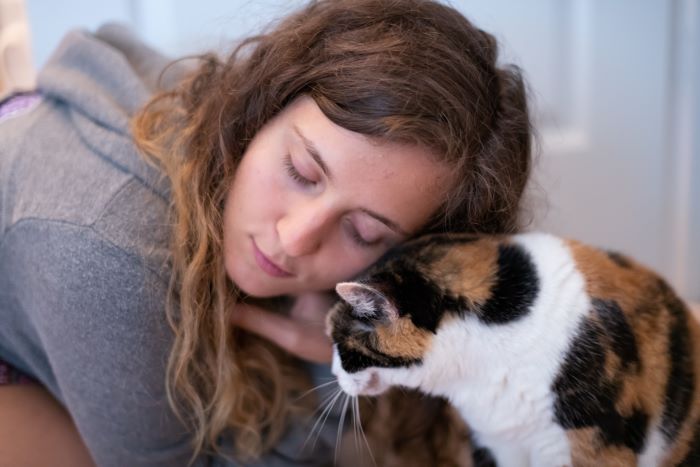
The different types of treatment need different follow up approaches.
Daily medication and an iodine-restricted diet do not provide a permanent cure, so without ongoing therapy, hyperthyroidism will recur. For this reason, it makes sense to carry out intermittent blood tests to confirm that the tablets or diet are still being effective. Your vet will advise you on the recommended frequency, but it could be every 3 – 6 months.
Surgical removal of the thyroid gland and treatment with radioactive iodine are both curative treatments, so there should be no need to have follow up monitoring tests once the initial post-procedure tests have shown that levels have returned to normal.
There is a small risk that treatment for hyperthyroidism might “un-mask” kidney disease that had previously been lurking under the surface, so your vet may recommend tests to monitor kidney parameters if this is considered to be an issue.
Do Cats With Hyperthyroidism Need a Special Diet?
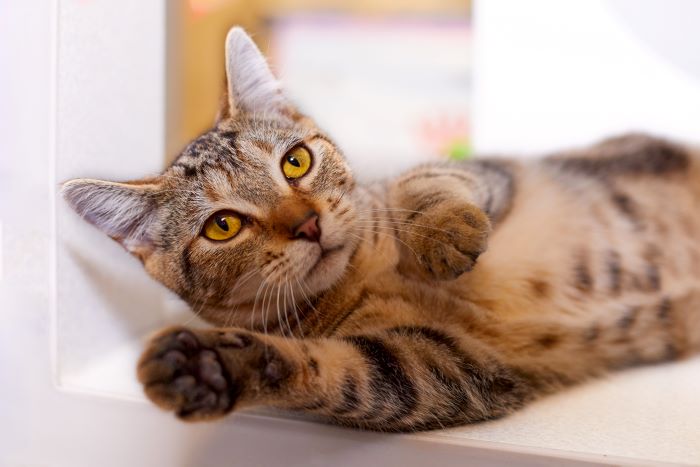
Other than the restricted-iodine diet that is used as a type of treatment, there are no specific diets for cats with hyperthyroidism. Cats that are treated with the other modalities can be fed their usual diets, or as recommended by your vet (e.g. senior diet, etc).
Related Articles:
- Best Cat Food for Hyperthyroidism
- 7 Best Healthy Cat Foods for Senior Cats
What Is the Life Expectancy for a Cat With Hyperthyroidism?
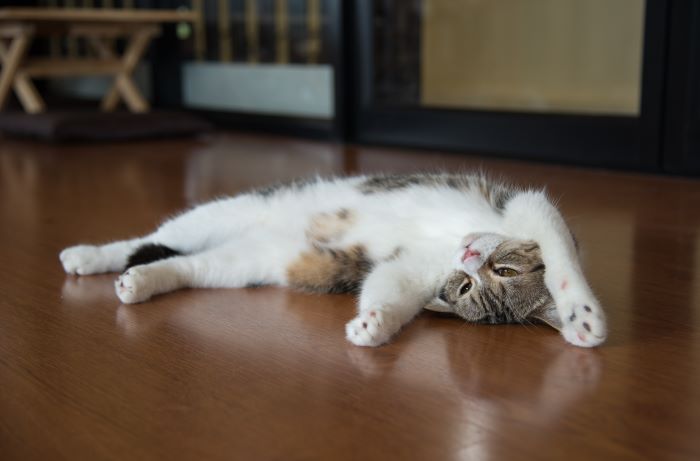
The prognosis for treated cats is good, with an expected life span of eighteen months to two years or more, with around one in three cats still being alive after four years.
The ultimate cause of death is not usually associated with hyperthyroidism: cancers and kidney disease are the most common reasons, and these are common in all elderly cats.
Remember, if you suspect that your cat may have hyperthyroidism, it’s important to get them to the vet promptly so that a proper diagnosis can be made, and a treatment plan put in place. Hyperthyroidism does not get better naturally, and it does not respond to home remedies or alternative approaches. The science is strong on this: for the sake of your cat’s health and longevity, the correct treatment needs to be given, and when this is done, the results are excellent, with affected cats returning to full, normal health.
